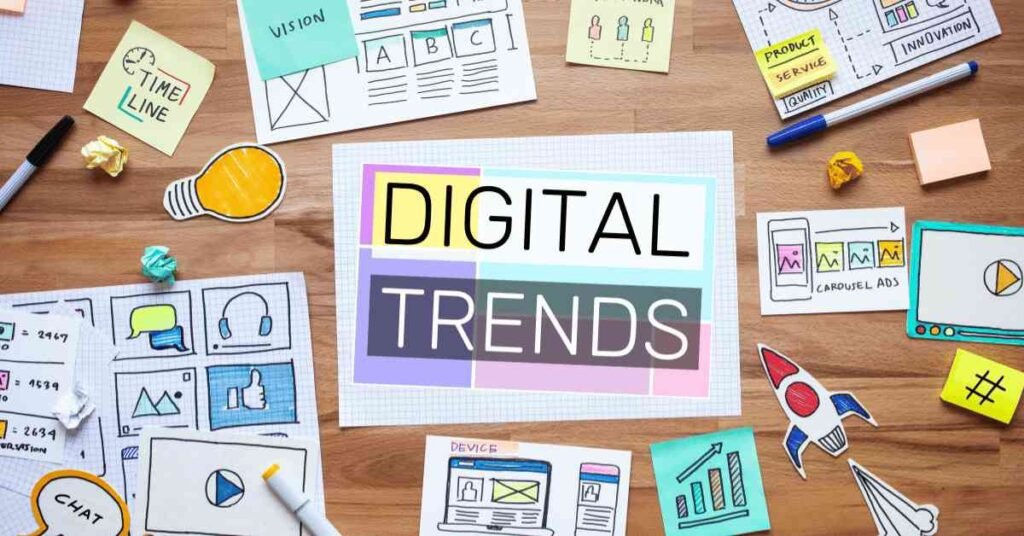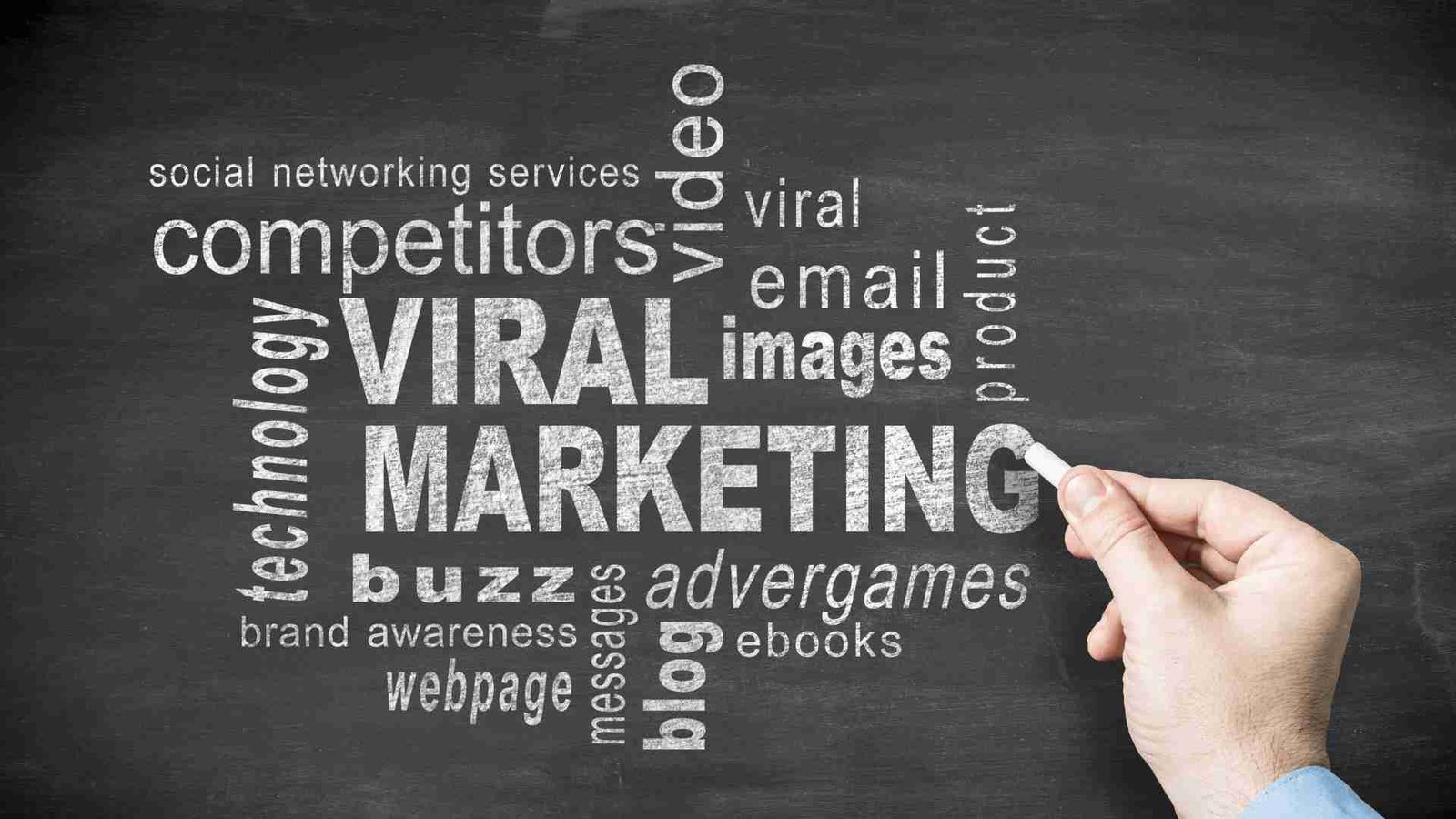
Top 3 Emerging Digital Marketing Trends and Updates for 2024

What are the Digital Marketing Trends for 2024?
In today’s digital world, the importance of digital marketing cannot be ignored. It provides the dependency of online marketing strategies, allow businesses to reach and engage with their target audience on a global level. Similar as traditional marketing methods, digital marketing offers unlimited reach and accessibility, allowing businesses to connect with potential customers regardless of geographical locations.
Although, its highly targeted nature allows for filtering in advertising, ensuring that marketing efforts are directed towards the most relevant audiences. With the ability to measure and analyze results in real-time, digital marketing provides clear insights into campaign performance, allows businesses to make decisions according to data and optimize their strategies for maximum results. Additionally, digital marketing gives meaningful engagement and interactivity with consumers through various channels, increasing brand loyalty and customer satisfaction. Its adaptability and flexibility show its importance, allowing businesses to quickly analyze and respond to changing market world. Overall, digital marketing is not just a tool for promotion; it’s a fundamental element for businesses with the aim to achieve the digital business objective.
Importance of being updated on Digital Marketing Trends
Staying updated in digital marketing is essential for using the latest tools, strategies, and trends to reach and engage your target audience easily. It ensures that you will remain competitive in a rapidly growing online marketing for generating your marketing ROI.
1. Market Positioning: Staying competitive ensures maintaining or improving market position.
2. Customer Retention: Competitive businesses retain customers better by offering unique value.
3. Revenue Growth: It provides revenue growth by grabbing opportunities and expanding market share.
4. Brand Reputation: It builds a positive brand reputation through consistent excellence.
5. Innovation and Adaptability: Competitiveness allows innovation and adaptability to market changes.
6. Attracting Talent: It attracts top talent seeking growth and innovation opportunities.
7. Risk Mitigation: Competitive businesses reduce risks by proactive responses to threats.
8. Long-Term Sustainability: It ensures long-term sustainability and resilience in the market.

Trend 1: AI-Driven Personalization
Artificial intelligence (AI) is changing by enhancing digital marketing by providing advanced data analysis, enabling personalized experiences, and automating various tasks. AI-powered tools analyse large datasets to uncover insights into consumer behaviour, allowing marketers to make informed decisions. Through hyper-personalization, AI tailors’ content and recommendations to individual preferences, enhancing engagement and conversion rates. AI also maintain customer interactions through chatbots and virtual assistants, improving customer service efficiency. Additionally, AI optimizes advertising campaigns by targeting the right audience segments and allocating resources effectively. As AI technology continues to evolve, its role in digital marketing will only grow, driving innovation and efficiency in marketing strategies.
Examples of AI-driven personalization
Here are examples of AI-driven personalization in content recommendations, email marketing, and targeted advertising:
1. Content Recommendations
- Netflix: Utilizes AI algorithms to analyse user viewing history, preferences, and behaviour to recommend personalized movie and TV show suggestions.
- YouTube: Employs AI-powered recommendation systems to suggest videos based on past viewing habits, search history, and user engagement metrics.
- Amazon: Uses AI-driven product recommendation engines to suggest items based on past purchases, browsing history, and demographic data.
2. Email Marketing
- Grammarly: Integrates AI to personalize email content by providing tailored writing suggestions and recommendations based on individual writing styles and preferences.
- Mailchimp: Implements AI algorithms to analyse subscriber behaviour and preferences, enabling personalized email content, subject lines, and send times for improved engagement and conversion rates.
- Sephora: Utilizes AI-powered email marketing to send personalized product recommendations and beauty tips based on past purchases, browsing history, and beauty preferences.
3. Targeted Advertising
- Facebook: Leverages AI algorithms to analyse user data and behaviour, allowing advertisers to target specific audience segments based on demographics, interests, and behaviours.
- Google Ads: Utilizes machine learning to optimize ad targeting and bidding strategies, delivering personalized ads to users based on search history, browsing behaviour, and intent signals.
- Amazon Advertising: Employs AI-driven algorithms to personalize product recommendations and sponsored ads based on user shopping history, purchase behavior, and product preferences.
Benefits of personalized experiences for both consumers and businesses
Benefits for Consumers:
- Relevance: Receive content created to interests.
- Improved Experience: Find what they need faster.
- Time Savings: Avoid sifting through irrelevant information.
- Enhanced Engagement: Interact more with personalized offerings.
- Increased Loyalty: Develop connection for brands that personalize.
Benefits for Businesses:
- Higher Conversion Rates: Personalization boosts sales.
- Improved Satisfaction: Better meet customer needs.
- Enhanced Marketing: Increase effectiveness and ROI.
- Better Insights: Gain valuable data for refinement.
- Competitive Advantage: Stand out and gain market share.

Trend 2: Voice Search Optimization
Voice-activated devices and virtual assistants are gaining popularity rapidly due to their convenience and accessibility. These devices, such as smart speakers and virtual assistants like Amazon Alexa, Google Assistant, and Apple Siri, allow users to interact with technology using natural language commands. The hands-free operation and ability to perform various tasks, such as playing music, setting reminders, controlling smart home devices, and searching the internet, have made voice-activated devices a staple in many households. Furthermore, advancements in natural language processing (NLP) and artificial intelligence (AI) have improved the accuracy and capabilities of virtual assistants, driving their widespread adoption across multiple platforms and devices. As a result, voice-activated devices and virtual assistants have become integral parts of daily life for millions of users worldwide.
Importance of Optimizing Content in Online Marketing
Here are the key points highlighting the importance of optimizing content for voice search:
1. Changing Search Behavior
- More users are utilizing voice search via virtual assistants like Siri, Alexa, and Google Assistant.
- Voice search queries tend to be more conversational and longer than text-based searches.
2. Enhanced Accessibility
- Voice search improves accessibility for users with disabilities or those who prefer hands-free interaction.
- Optimizing content for voice search ensures inclusivity and reaches a broader audience.
3. Improved User Experience
- Voice search provides faster and more convenient access to information, enhancing the overall user experience.
- Optimized content ensures that users receive accurate and relevant answers to their voice queries, increasing satisfaction.
4.Competitive Advantage
- Businesses that optimize content for voice search gain a competitive edge by appearing in voice search results.
- With the rising popularity of voice search, failing to optimize content can result in losing visibility to competitors.
5. Local Search Optimization
- Voice search is often used for local queries, such as “near me” searches.
- Optimizing content for voice search improves visibility in local search results, driving foot traffic and conversions for local businesses.
6. Natural Language Queries
- Voice search queries are more conversational and natural, reflecting how people speak.
- Optimizing content for voice search involves understanding and incorporating long-tail keywords and natural language phrases.
7. Voice Search SEO
- Optimizing content for voice search requires focusing on featured snippets, as they often provide the answer to voice queries.
- Structuring content in a format that answers common questions concisely increases the chances of being featured in voice search results.
8. Future-Proofing Strategies
- As voice search continues to grow in popularity, optimizing content early ensures readiness for future search trends.
- Businesses that prioritize voice search optimization stay ahead of the curve and maintain relevance in evolving search landscapes.
In summary, optimizing content for voice search is crucial for improving visibility, accessibility, user experience, and competitive advantage in a changing search landscape.
Strategies for adapting Digital Marketing Campaigns
- Prioritize long-tail keywords mirroring natural language.
- Know about search engine optimization for local SEO to capture location-based queries.
- Develop FAQ content to align with common voice search questions.
- Aim for featured snippets by providing concise answers.
- Ensure fast website loading speeds for mobile devices.
- Implement schema markup for enhanced content visibility.
- Analyze voice search data and refine strategies accordingly.
- Explore voice search advertising opportunities for engagement.

Trend 3: Augmented Reality (AR) Marketing
Augmented reality (AR) is increasingly shaping digital marketing strategies by offering immersive and interactive experiences to consumers. Brands uses AR technology to engage with their audience in innovative ways, such as virtual try-on experiences for products, interactive AR ads, and location-based AR activations. AR enhances product visualization, allowing consumers to see how products fit into their lives before making a purchase decision. It also generates engagement on social media platforms through AR filters and lenses, driving user-generated content and brand awareness. As AR technology continues to evolve, its role in digital marketing will expand, offering new opportunities for brands to captivate and connect with their audience in memorable and impactful ways.
Examples of AR applications
Here are examples of AR applications in advertising, product visualization, and interactive experiences:
1. Advertising
- Snapchat Filters: Brands create sponsored AR filters that users can apply to their selfies, promoting products or campaigns in a fun and interactive way.
- Facebook AR Ads: Businesses use AR technology in their Facebook ads to allow users to interact with virtual versions of products before purchasing, enhancing the shopping experience.
- AR Billboards: Outdoor advertisers incorporate AR elements into traditional billboards, enabling passersby to interact with virtual content using their smartphones.
2. Product Visualization
- IKEA Place: IKEA’s AR app lets users virtually place furniture and home decor items in their space using their smartphone camera, helping them visualize how products will look in their home before buying.
- Warby Parker Virtual Try-On: Eyewear retailer Warby Parker offers an AR feature on its website and app that allows customers to try on glasses virtually, improving the online shopping experience.
- Sephora Virtual Artist: Sephora’s AR tool enables users to try on makeup virtually, experimenting with different shades and products to find their perfect look.
3. Interactive Experiences
- Pokemon GO: The popular mobile game uses AR technology to overlay virtual Pokemon characters onto the real world, encouraging players to explore their surroundings and interact with digital creatures.
- AR Escape Rooms: Entertainment venues and companies offer AR-based escape room experiences where players solve puzzles and complete challenges in a physical space enhanced by digital elements.
- Museum AR Guides: Museums and cultural institutions implement AR guides that provide interactive information and virtual exhibits, enhancing visitors’ learning and engagement.
How AR can enhance consumer engagement and drive conversions?
- Immersive Engagement: AR offers interactive experiences that captivate consumers, increasing engagement.
- Visualizing Products: Consumers can visualize products in real-world settings, boosting confidence and driving conversions.
- Personalized Experiences: Tailored AR content creates memorable interactions, enhancing brand affinity.
- Social Sharing: Engaging AR prompts users to share experiences, amplifying brand reach.
- In-Store Activation: AR in physical stores attracts traffic and encourages impulse purchases.
- Educational Content: AR provides valuable product information, influencing purchase decisions.
In conclusion, the digital marketing world in 2024 is shitfed for significant transformation, driven by three emerging trends: AI-driven personalization, immersive AR experiences, and the rise of voice search optimization. As consumers increasingly expect personalized interactions and seamless integration between digital and physical environments, businesses must adapt their strategies to stay competitive. Adapting AI algorithms for personalized content recommendations and targeted advertising can enhance engagement and gather conversions. Additionally, perusing AR technology enables brands to create immersive and interactive experiences that capture consumers and boost brand presence. Additionally, optimizing digital marketing campaigns for voice search ensures visibility and accessibility in an evolving search platform. By using these emerging trends, businesses can stay ahead of their competitors and successfully navigate the digital marketing of 2024.
Related Articles
Frequently Asked Questions
The top three emerging trends are AI-powered personalization, voice search optimization, and augmented reality marketing.
Businesses can use AI for predictive analytics, chatbots/virtual assistants, and content personalization to improve targeting and customer experiences.
Optimize for featured snippets, focus on natural language keywords, and implement structured data markup to enhance visibility and relevance in voice search results.

VAIBHAV GUPTA
DIGITAL MARKETER
I’m Vaibhav Gupta the founder of DCampaign Marketing. I’m having experience for more than 4 year in the field of digital marketing as well blogging.

